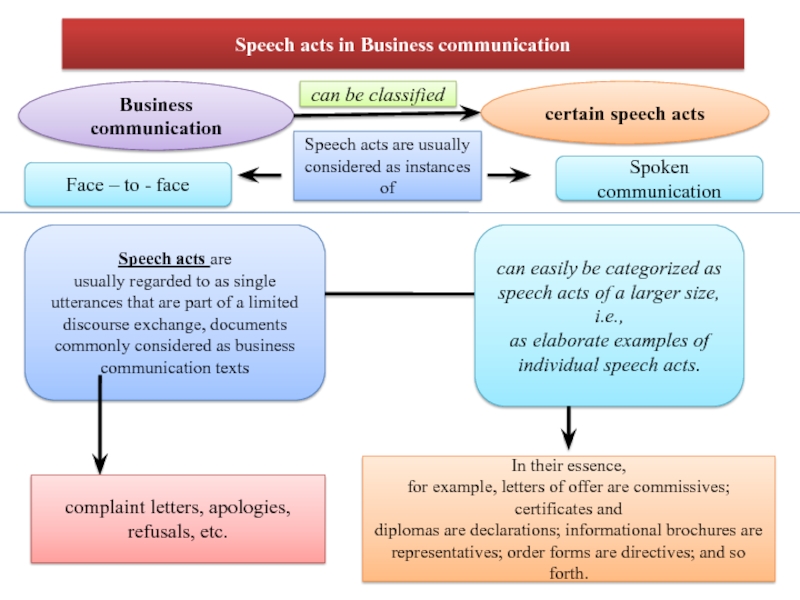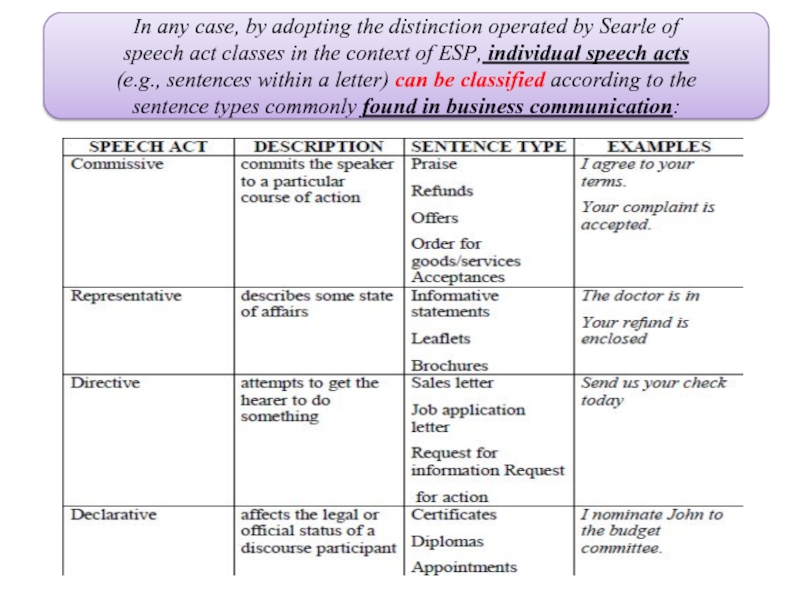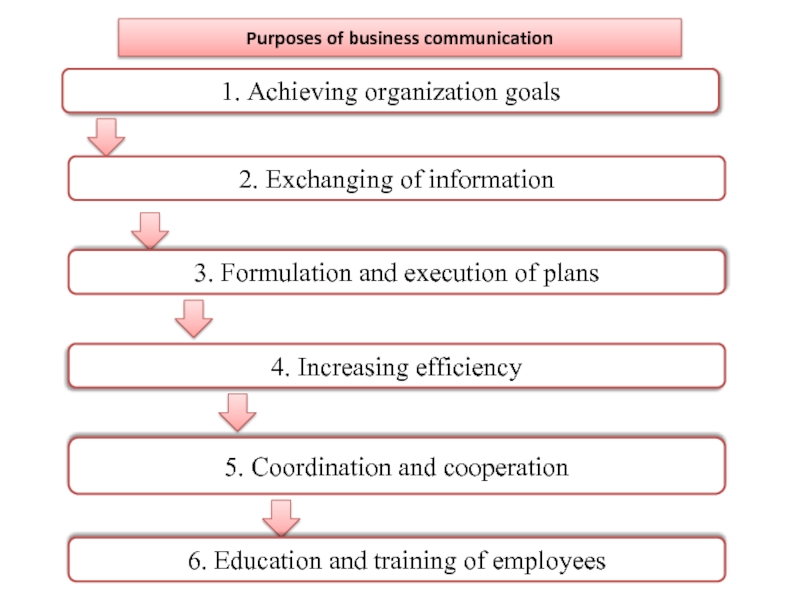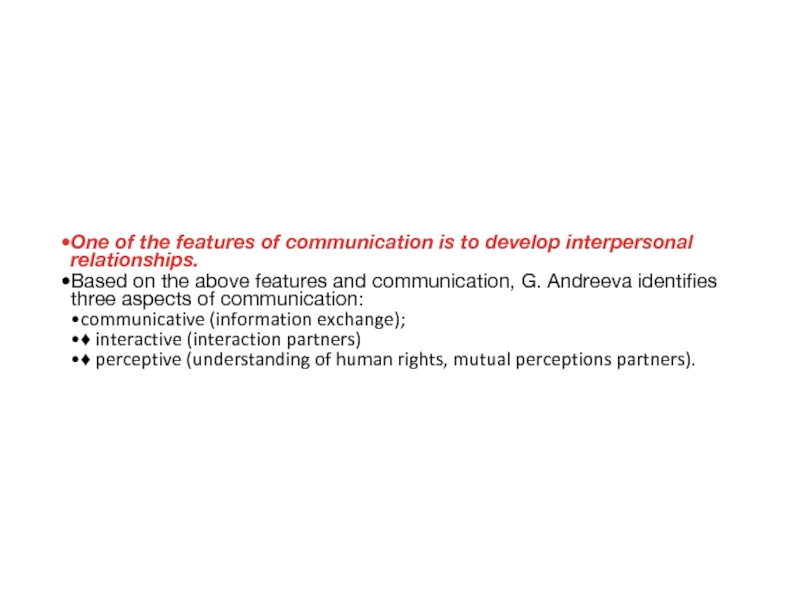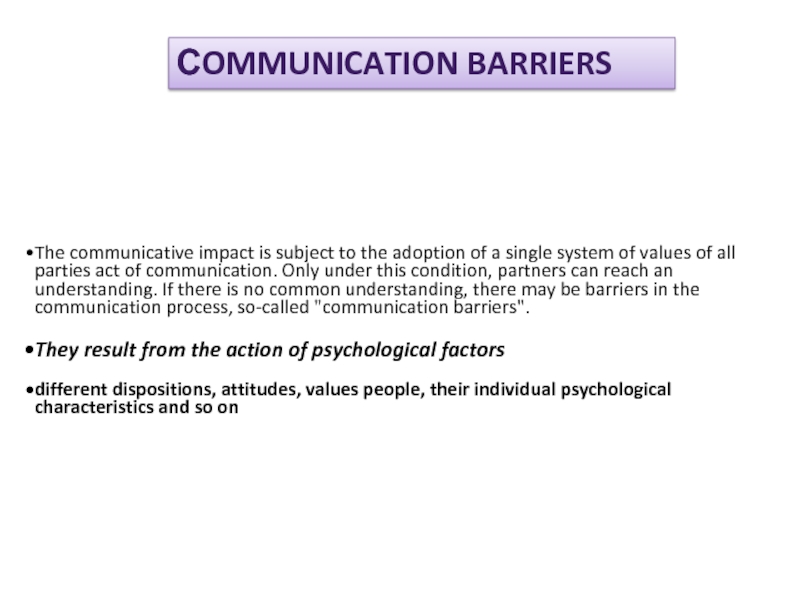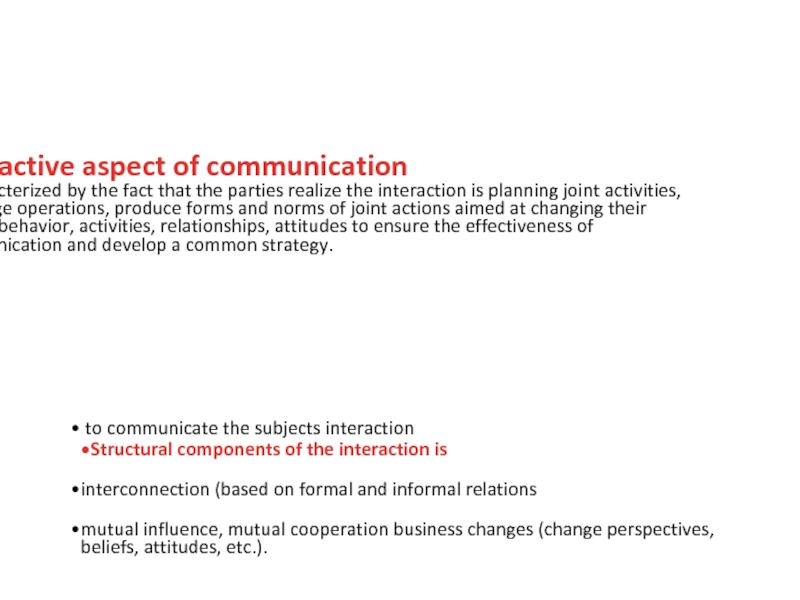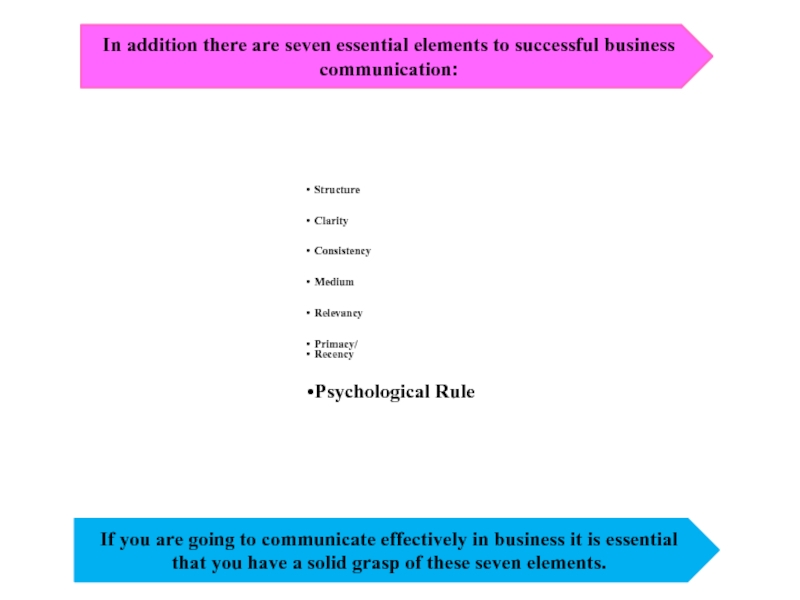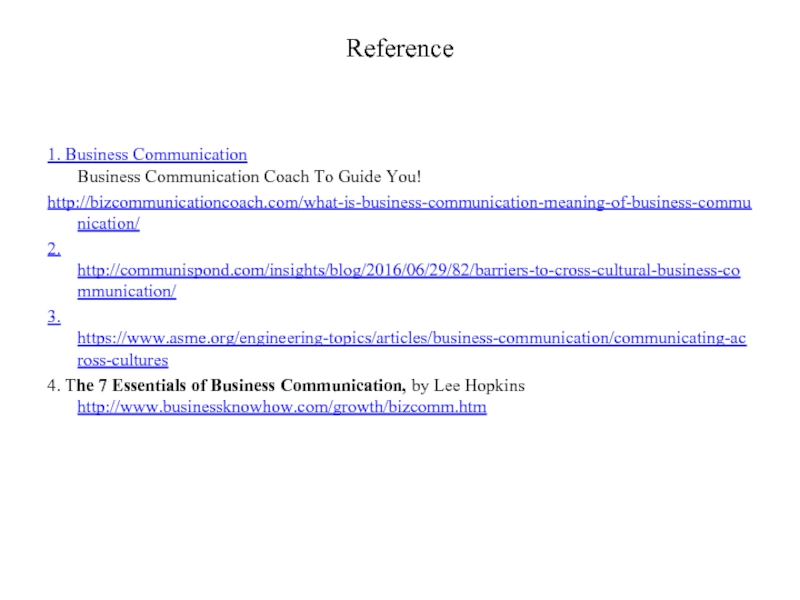Special aspects of business communication in the speech act theory
Executed by: Simanbayeva S., Utemuratova A.,
Shayakhmetova E., Zhangazinova Z., Abdrakhmanova Zh.
Almaty, 2017
- Главная
- Разное
- Дизайн
- Бизнес и предпринимательство
- Аналитика
- Образование
- Развлечения
- Красота и здоровье
- Финансы
- Государство
- Путешествия
- Спорт
- Недвижимость
- Армия
- Графика
- Культурология
- Еда и кулинария
- Лингвистика
- Английский язык
- Астрономия
- Алгебра
- Биология
- География
- Детские презентации
- Информатика
- История
- Литература
- Маркетинг
- Математика
- Медицина
- Менеджмент
- Музыка
- МХК
- Немецкий язык
- ОБЖ
- Обществознание
- Окружающий мир
- Педагогика
- Русский язык
- Технология
- Физика
- Философия
- Химия
- Шаблоны, картинки для презентаций
- Экология
- Экономика
- Юриспруденция
Special aspects of business communication in the speech act theory презентация
Содержание
- 1. Special aspects of business communication in the speech act theory
- 2. is a specialized branch of general
- 3. If you speak to a man in
- 4. The importance of cross culture and business
- 5. Speech acts in Business communication Business communication
- 6. In any case, by adopting the distinction
- 7. There are seven essential elements to successful
- 8. Objectives of business communication Communication has many
- 9. 1. Achieving organization goals 2. Exchanging
- 10. The Functions of Business Communication The Functions
- 11. One of the features of communication is
- 12. The communicative aspect of communication
- 13. The communicative impact is subject to the
- 14. Interactive aspect of communication is characterized
- 15. Perceptual aspect of communication. is manifested in
- 16. Conclusion From the above discussion, we can
- 18. Structure Clarity Consistency Medium
- 19. Reference 1. Business Communication Business Communication
Слайд 1Ministry of Education and Science of the Republic of Kazakhstan KAZAKH ABLAI
Слайд 2 is a specialized branch of general communication that is specifically
“Business Communication process is a chain made up of identifiable links. This chain includes sender, message, encoding, receiver, decoding and feedback.”(according to Mr. Kreitner)
“The Communication process is the method by which the sender transfers information and understanding to the receiver.”(according to S.K. Kapur)
Sender
Encoding
Media
Message
Decoding
Receiver
Response
Feedback
Noise
Business communication
Слайд 3If you speak to a man in a language he understands,
Intercultural communication
is the process of sending and receiving messages between people whose cultural background could lead them to interpret verbal and non-verbal signs differently
High Context Culture- cultures that rely heavily on non-verbal and subtle situational cues in communication.
Low Context Culture - cultures that rely heavily on words to convey meaning n communication.
Слайд 4The importance of cross culture and business communication in era of
Business opportunity,
Job opportunities,
Sharing vies and ideas,
Talent improvisation and
An understanding of diverse market
In business, cross cultural communication plays a critical role in successfully carrying out business with teams and stakeholders in other areas of the globe. When the communication is effective, everyone benefits from increased bandwidth, institutional knowledge, and competitive advantage. Ineffective communication however, can offend, confuse or send a misconstrued message which could lead to broken relations with customers, partners, vendors, and employees.
A common cross cultural barrier in business communication is of course, language. Although English is regarded as the common international language of business, not every business globally uses English on a regular basis. Employees may have more difficulty when communicating in English, which can lead to misunderstandings when taking direction, understanding level of urgency and communicating issues or concerns. Never assume that because your instructions receive head nods. Check for real understanding by asking others to summarize what they just heard you say.
Every culture has a different set of values, business ethics, accepted behavior and decorum− even different facial expressions and gestures. It is important to understand these differences – to show genuine respect for other cultural mores –when communicating with professionals from other cultures. For example, in the United States it is common for the speaker to share personal anecdotes to build audience rapport, but in other countries this is considered tiresome. Humor can be especially tricky to employ; better to be straightforward rather than run the risk that your joke may inadvertently embarrass or insult the listener.
Слайд 5Speech acts in Business communication
Business communication
can be classified
certain speech acts
Speech acts
considered as instances of
Face – to - face
Spoken communication
Speech acts are
usually regarded to as single utterances that are part of a limited
discourse exchange, documents commonly considered as business
communication texts
can easily be categorized as speech acts of a larger size, i.e.,
as elaborate examples of individual speech acts.
complaint letters, apologies, refusals, etc.
In their essence,
for example, letters of offer are commissives; certificates and
diplomas are declarations; informational brochures are
representatives; order forms are directives; and so forth.
Слайд 6In any case, by adopting the distinction operated by Searle of
speech
(e.g., sentences within a letter) can be classified according to the
sentence types commonly found in business communication:
Слайд 7There are seven essential elements to successful business communication:
Structure
Clarity
Consistency
Medium
Relevancy
Primacy/Recency
Psychological Rule
Every good
an opening
a body
a close
This structural rule holds true no matter what your communication is -- a memo, a phone call, a voice mail message, a personal presentation, a speech, an email, a webpage, or a multi-media presentation.
An opening allows your communication's audience to quickly understand what the communication is about.
The body of the message that you communicate all of your facts and figures relative to the action you want your communication's audience to take after attending to your message.
The Close is where you sum up your communication, remind your audience of your key points, and leave them with a clear understanding of what you want them to do next.
Слайд 8Objectives of business communication
Communication has many objectives. Its primary objective is
In the fields of business, the main objective of communication is to help managers in performing all managerial functions smoothly. Different objectives of Business Communication are discussed below.
Слайд 91. Achieving organization goals
2. Exchanging of information
3. Formulation and execution of
4. Increasing efficiency
5. Coordination and cooperation
6. Education and training of employees
Purposes of business communication
Слайд 10The Functions of Business Communication
The Functions of Business Communication is the
The functions of Business Communication or function of communication are discussed below:
Managing Co-ordination and Co-operation
Helping in Planning
Helping in Decision Making
Conveying Message
Creating Image
Publicizing Goods and Services
Controlling
Performance Evaluation
Initiating Inspiration
Motivating
Слайд 11One of the features of communication is to develop interpersonal relationships.
Based
communicative (information exchange);
♦ interactive (interaction partners)
♦ perceptive (understanding of human rights, mutual perceptions partners).
Слайд 12
The communicative aspect of communication
is closely related to the exchange of information,
Слайд 13The communicative impact is subject to the adoption of a single
They result from the action of psychological factors
different dispositions, attitudes, values people, their individual psychological characteristics and so on
СOMMUNICATION BARRIERS
Слайд 14Interactive aspect of communication
is characterized by the fact that the
to communicate the subjects interaction
Structural components of the interaction is
interconnection (based on formal and informal relations
mutual influence, mutual cooperation business changes (change perspectives, beliefs, attitudes, etc.).
Слайд 15Perceptual aspect of communication.
is manifested in the perception of external signs
The main task of perception - to form a first impression of the man. It is under the influence of three factors - factor advantages, attractiveness factor and attitude factor to the observer.
The most important is informative properties such as facial expression (means displays of affection), gestures, posture, gait, appearance, voice and speech features.
Слайд 16Conclusion
From the above discussion, we can conclude that communication occurred in
Meaning of Communication
What is Communication?
Man can’t live alone. This universal truth implies that people must have companion. One of the many reasons for having companion is that people want to express themselves. Whenever, we express our expressions to others, it is called Communication.
It involves two parties:
Sender
Receiver
Слайд 17
In international business practices, reason and emotion both play a role.
When it comes to communication, what's proper and correct in one culture may be ineffective or even offensive in another. In reality, no culture is right or wrong, better or worse—just different. In today's global business community, there is no single best approach to communicating with one another. The key to cross-cultural success is to develop an understanding of, and a deep respect for, the differences.
Слайд 18Structure
Clarity
Consistency
Medium
Relevancy
Primacy/
Recency
Psychological Rule
In addition there are seven essential elements to successful business
If you are going to communicate effectively in business it is essential that you have a solid grasp of these seven elements.
Слайд 19Reference
1. Business Communication
Business Communication Coach To Guide You!
http://bizcommunicationcoach.com/what-is-business-communication-meaning-of-business-communication/
2. http://communispond.com/insights/blog/2016/06/29/82/barriers-to-cross-cultural-business-communication/
3.
4. The 7 Essentials of Business Communication, by Lee Hopkins http://www.businessknowhow.com/growth/bizcomm.htm




